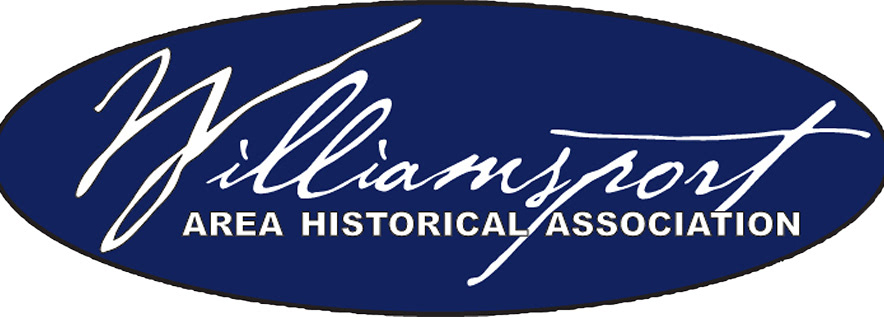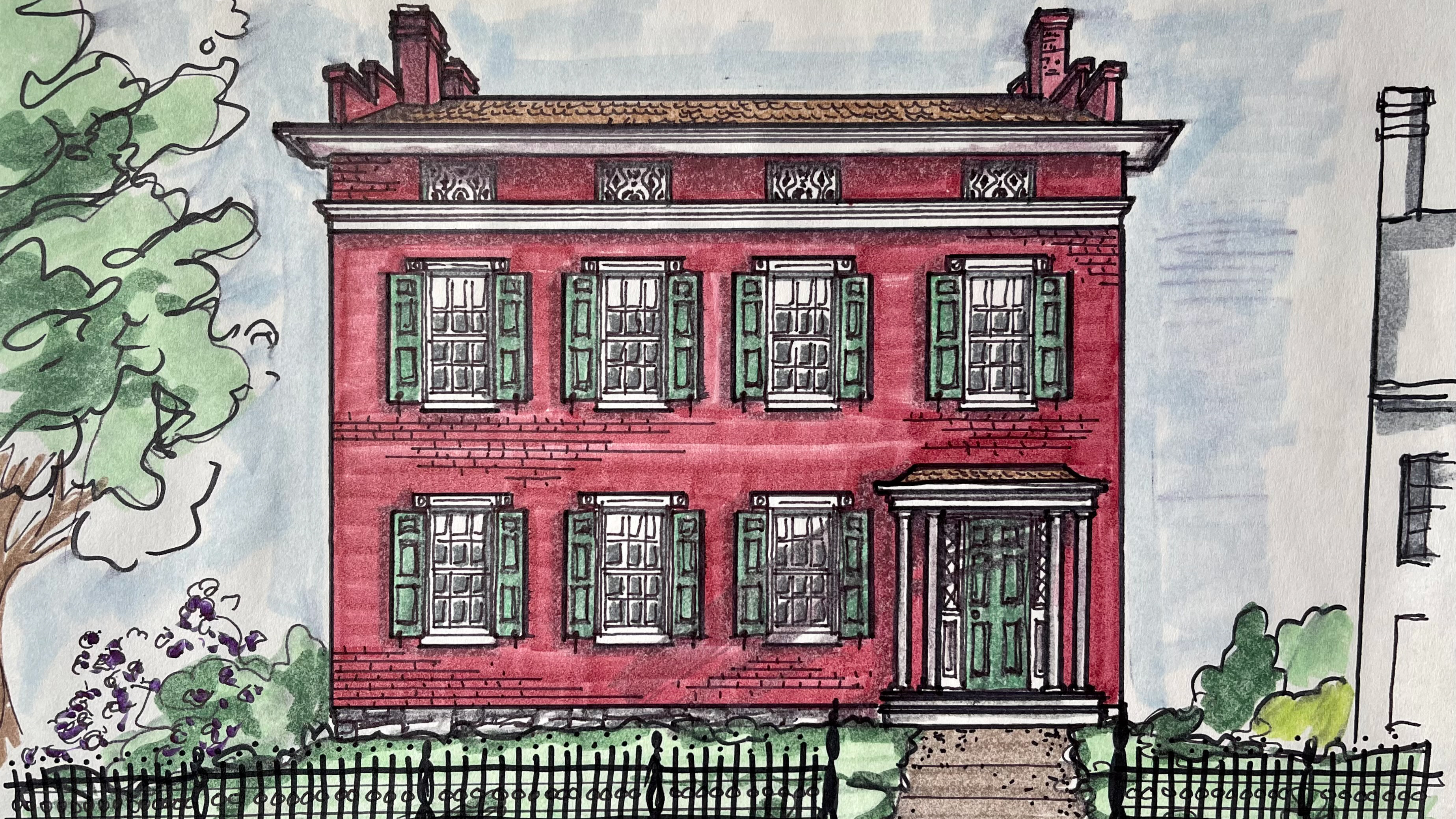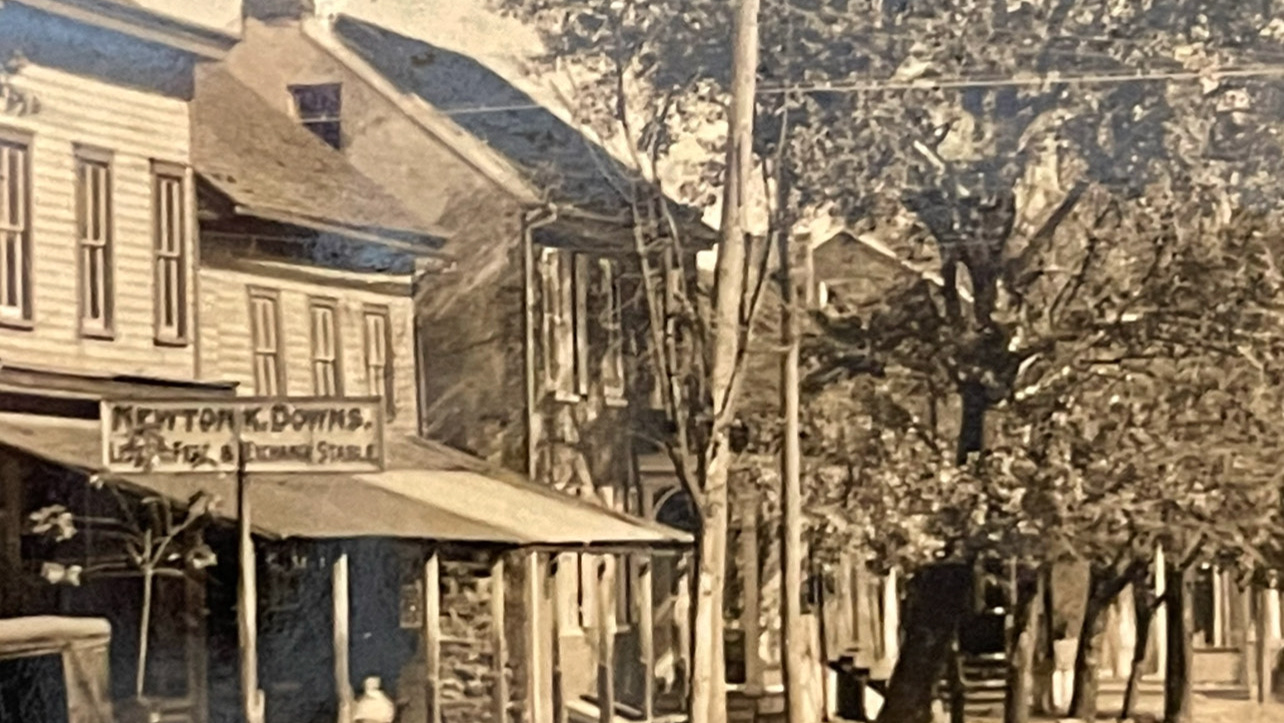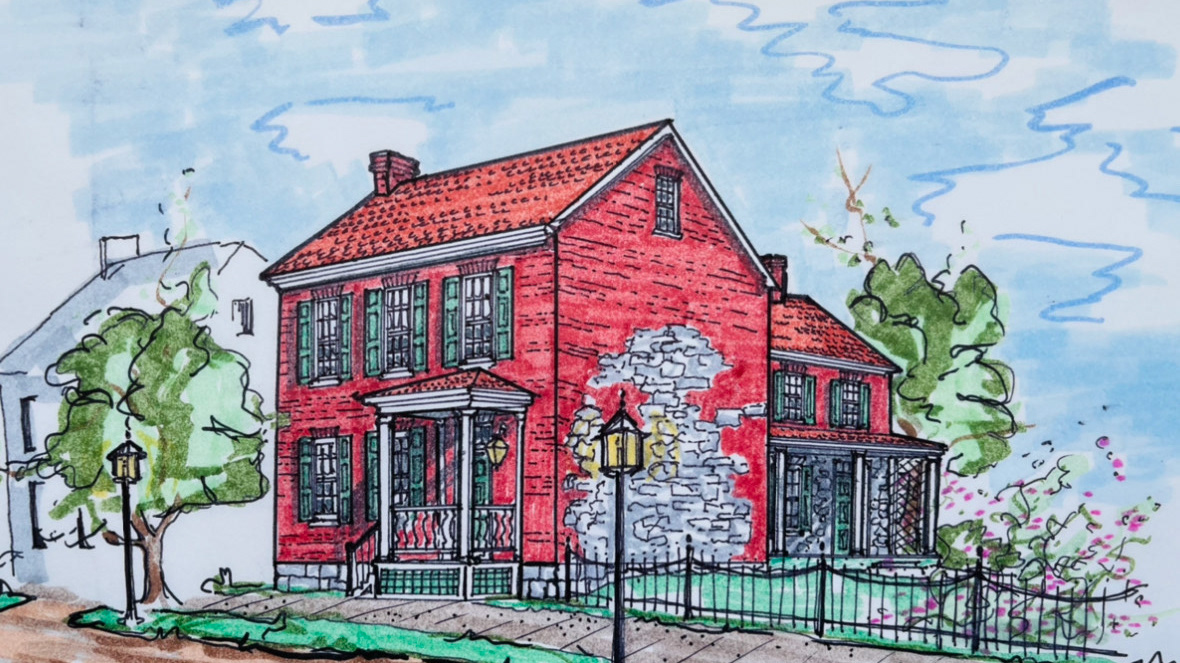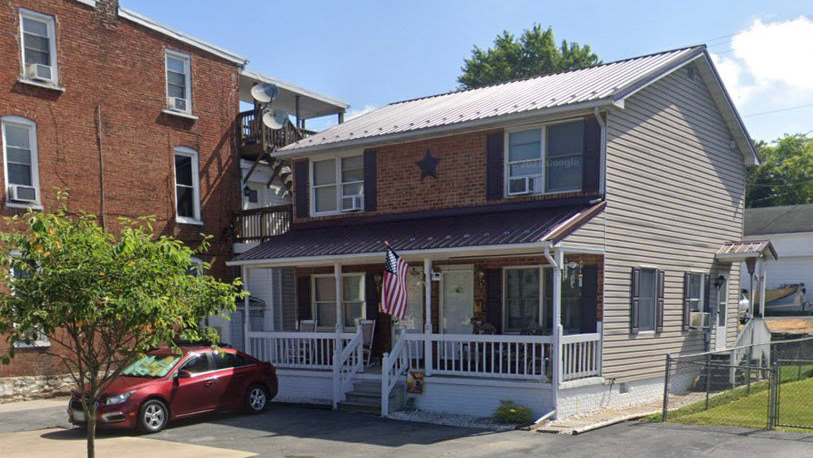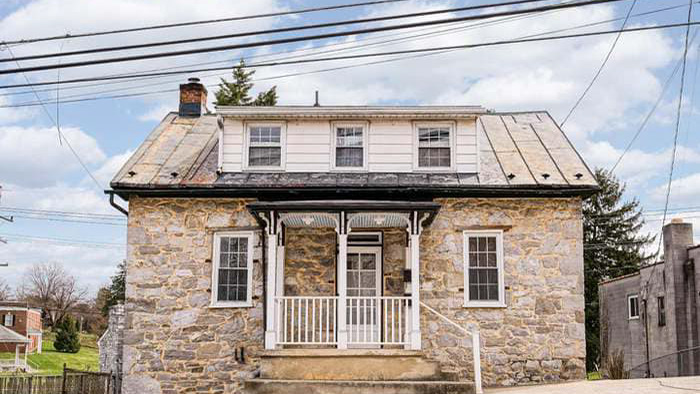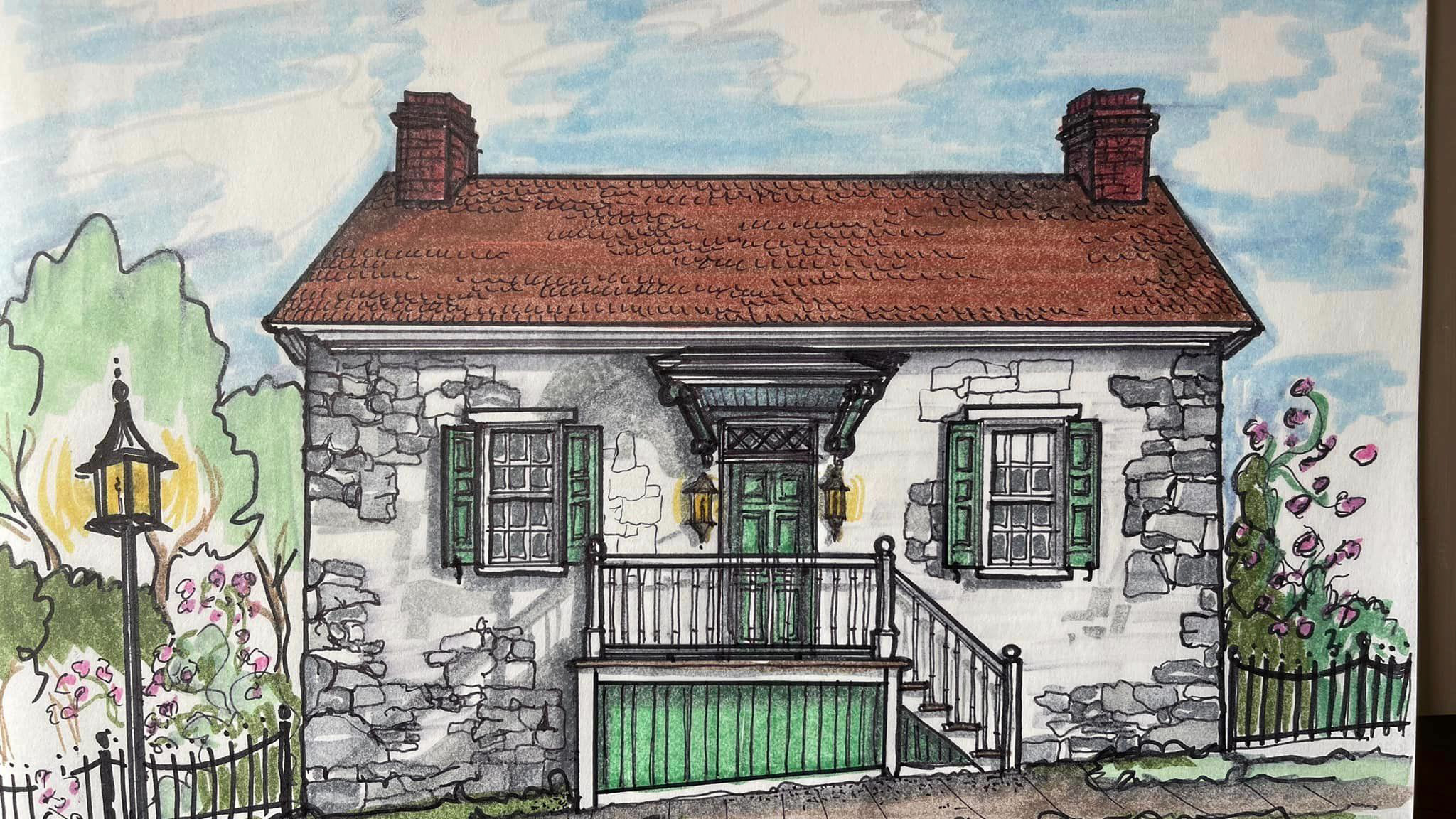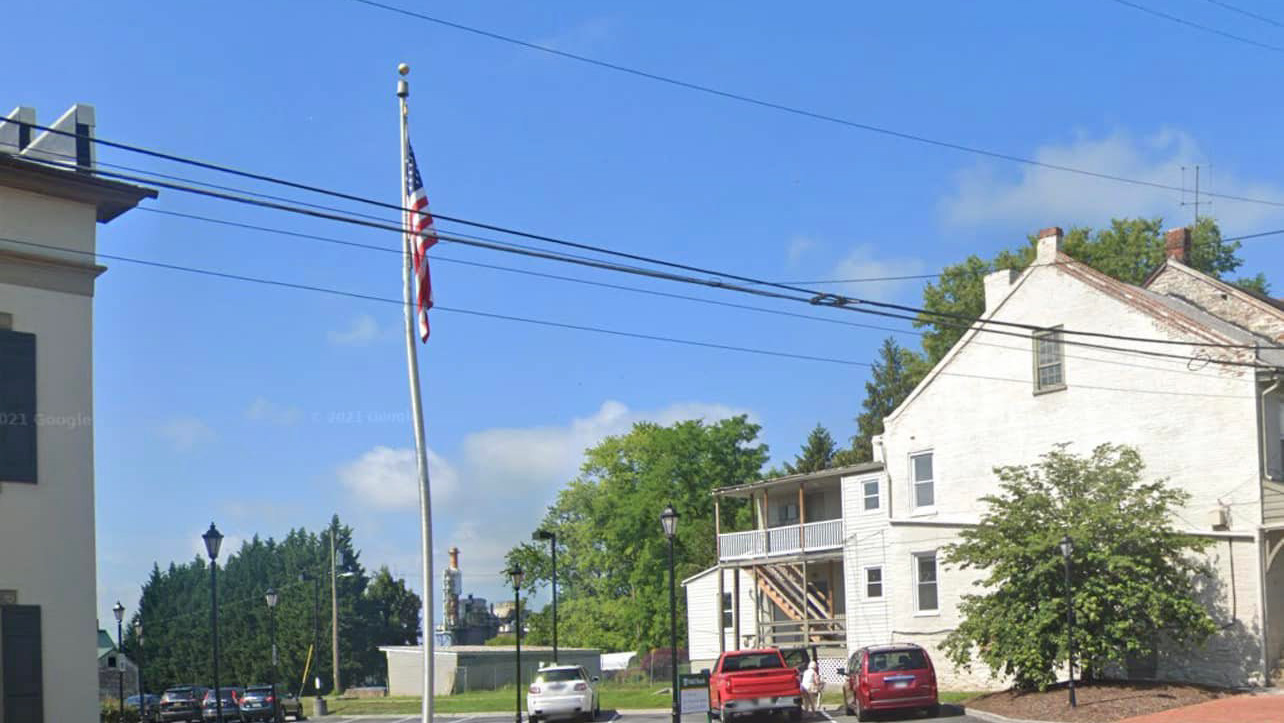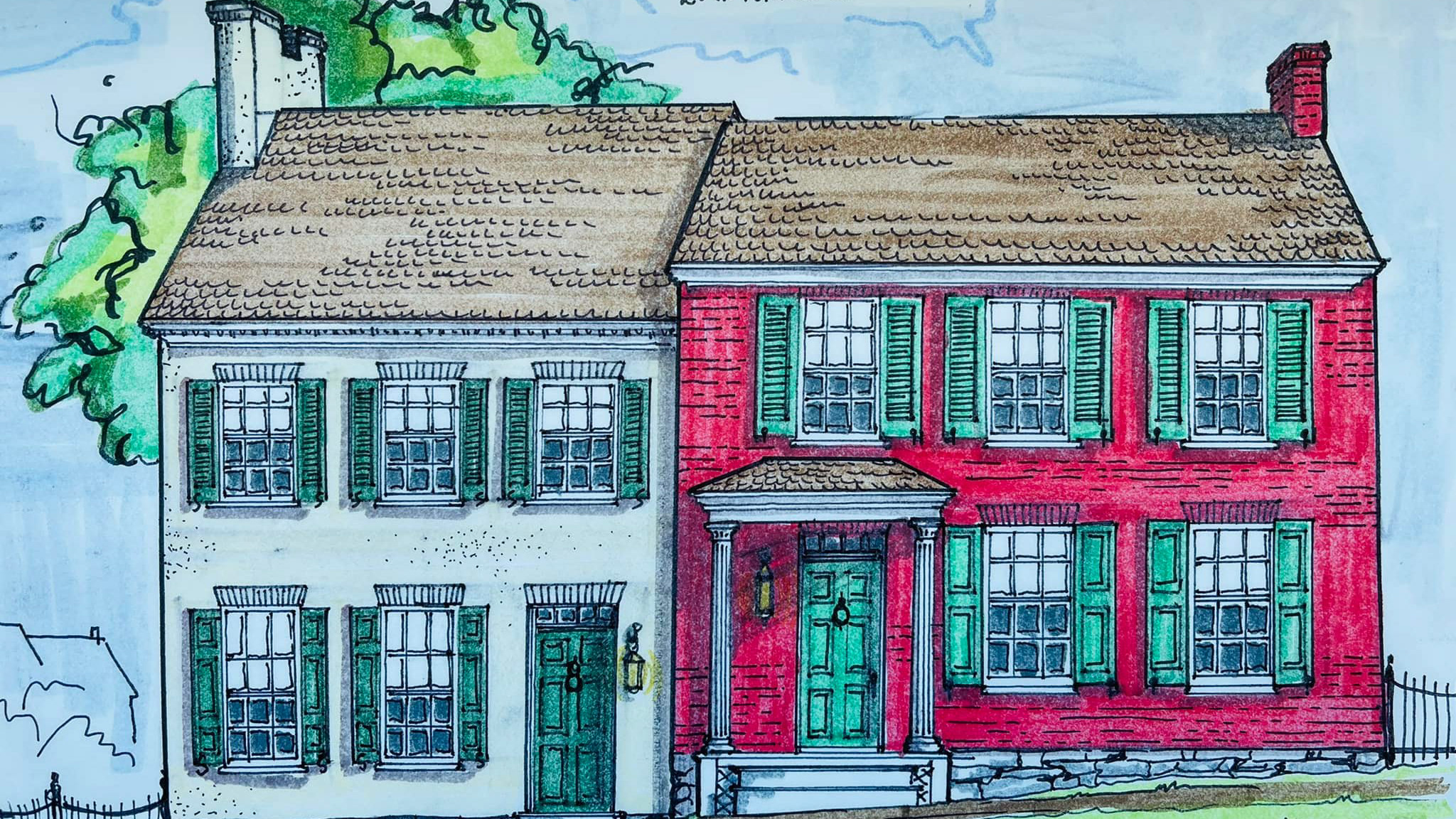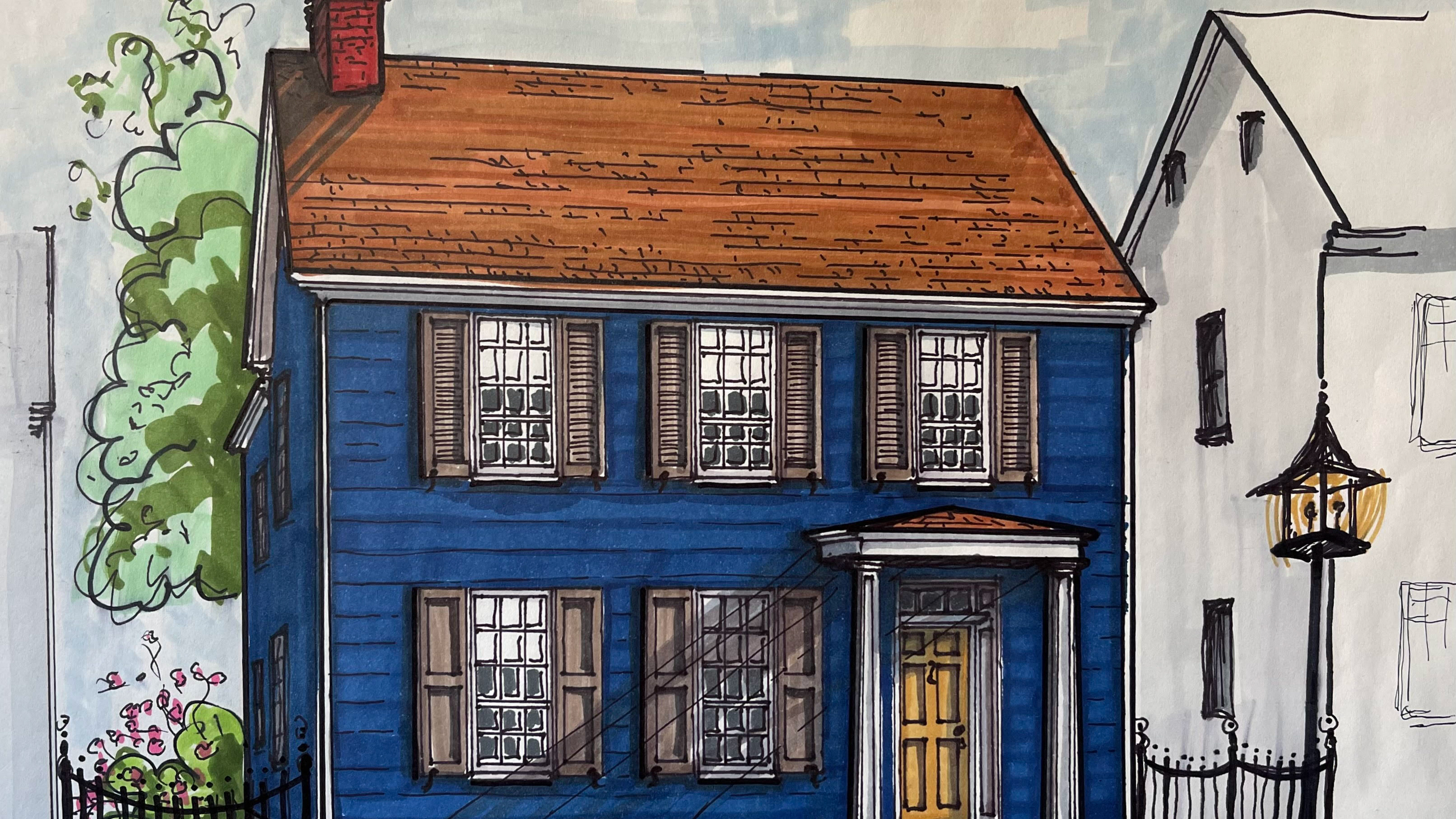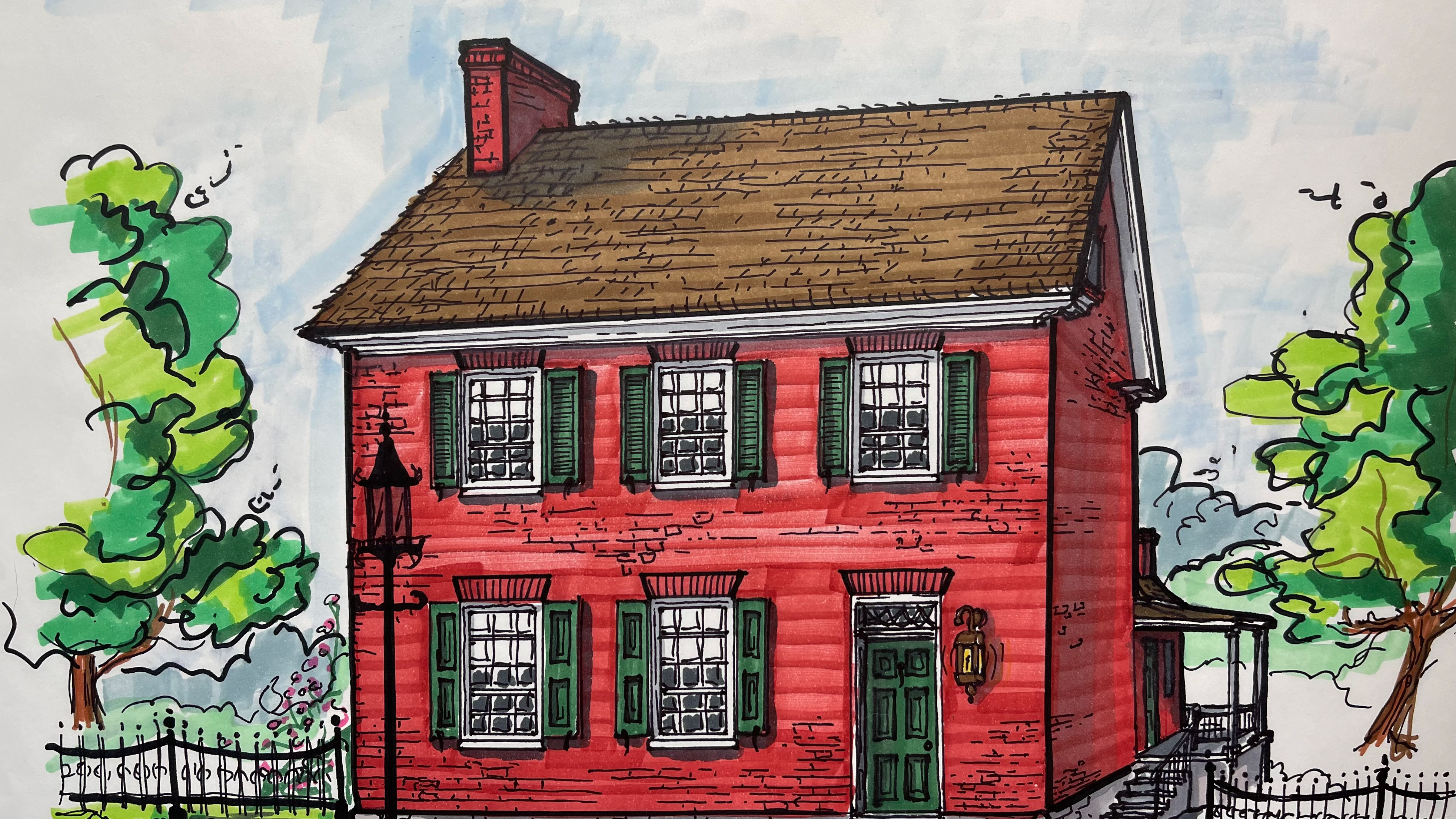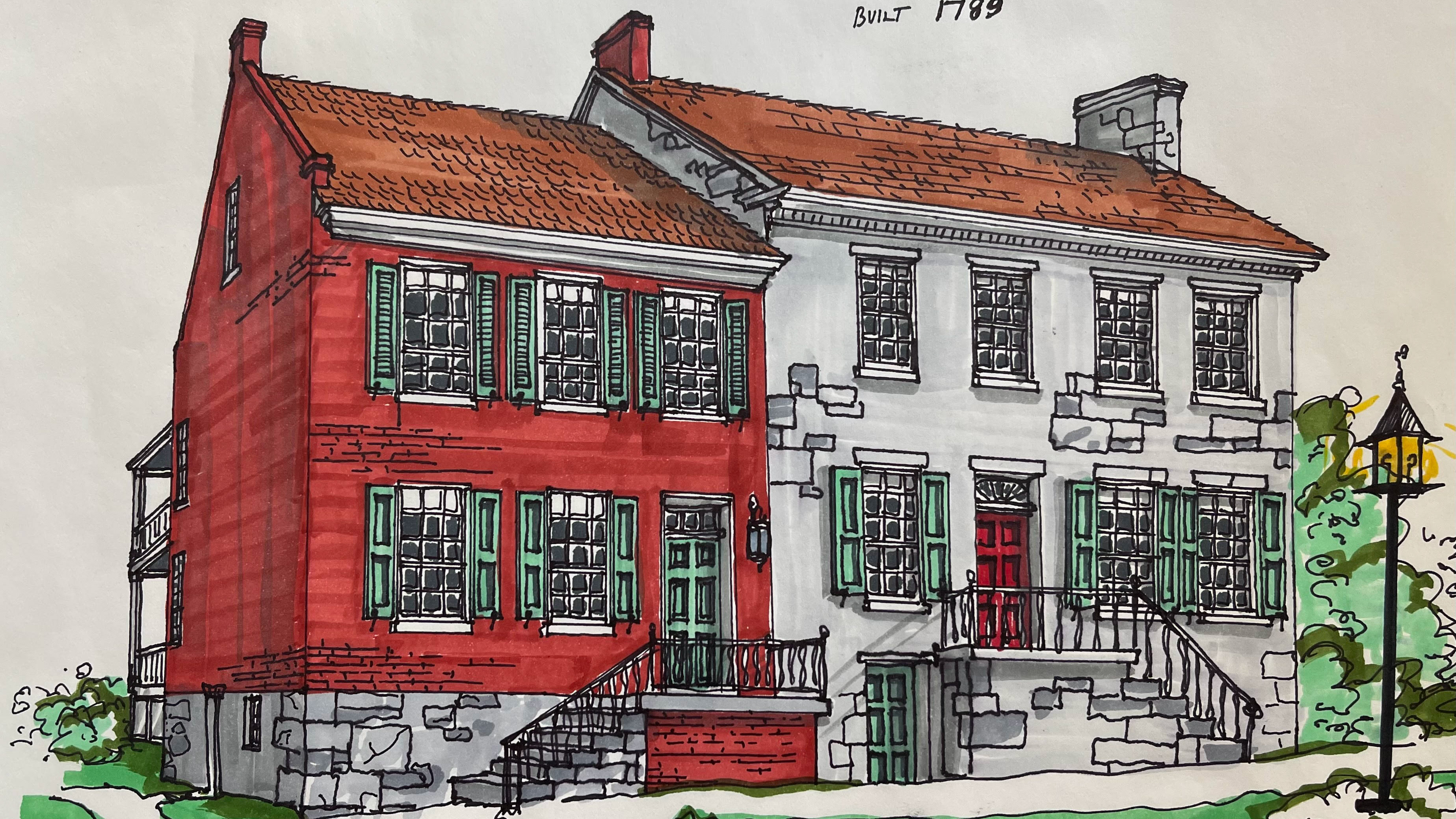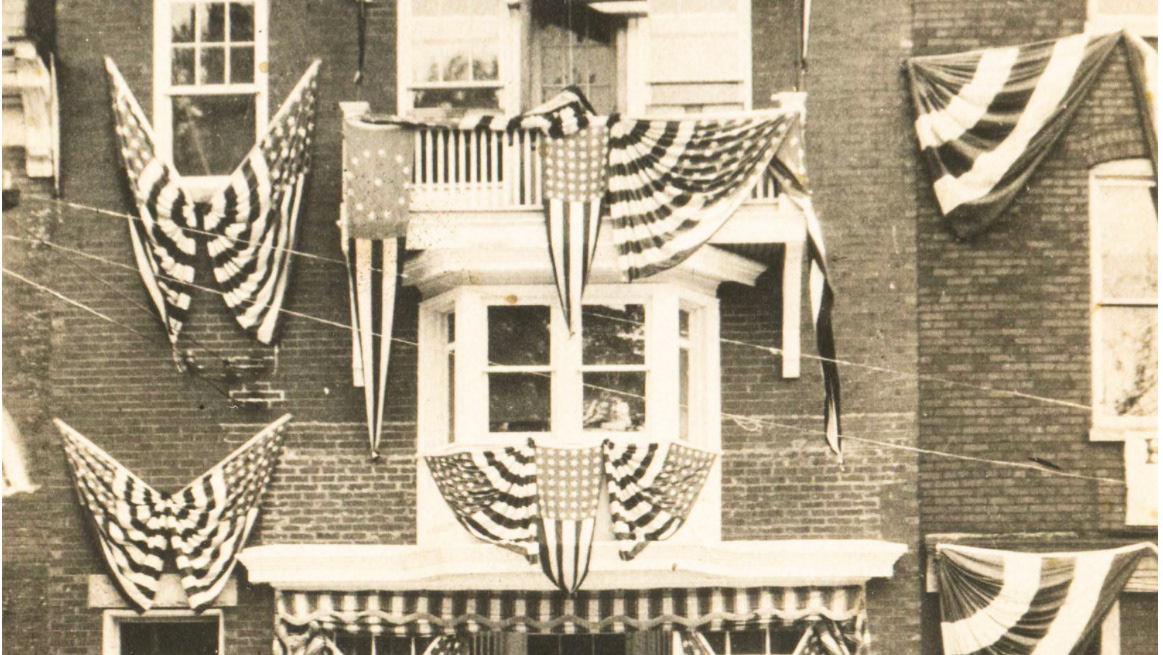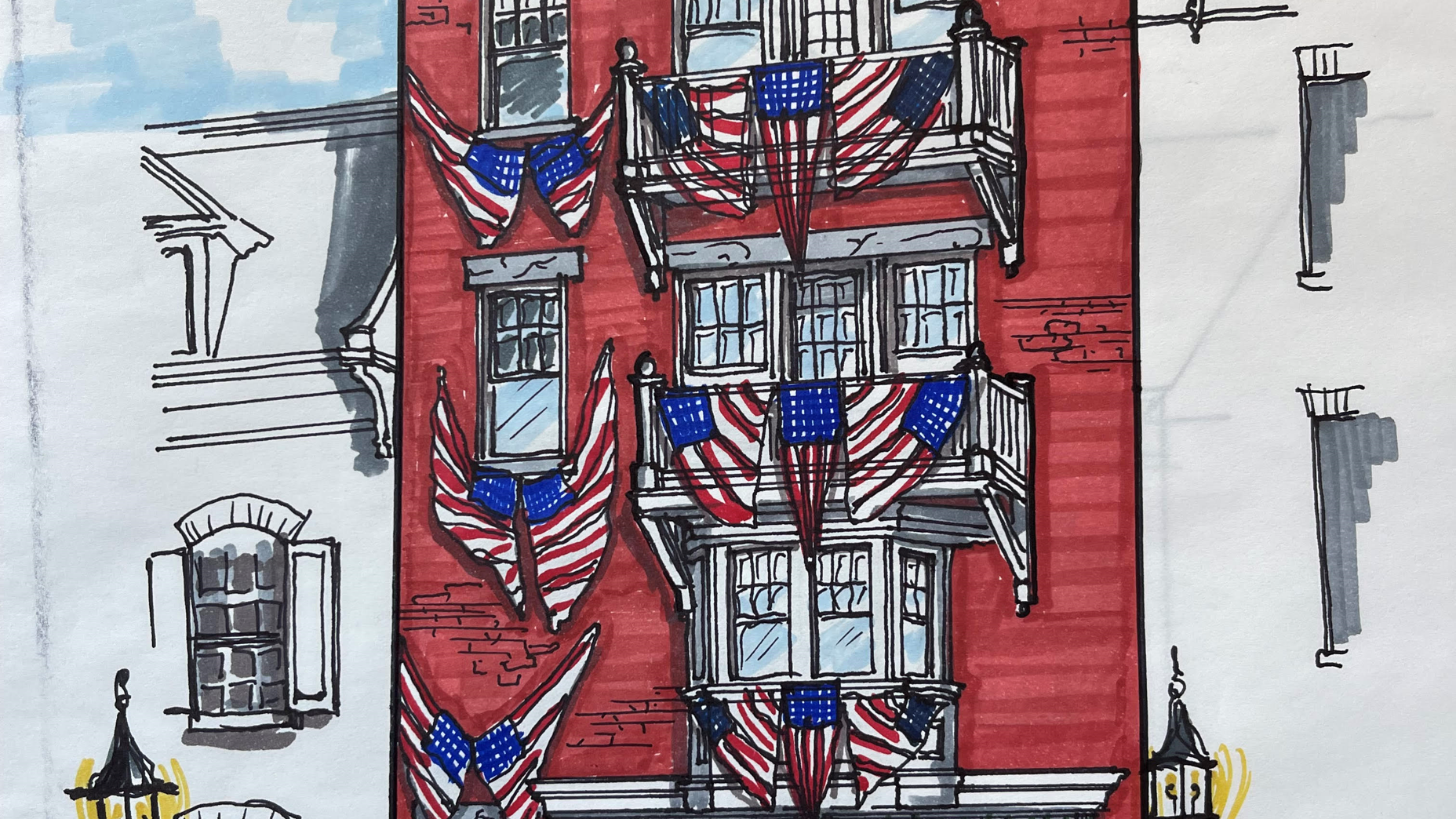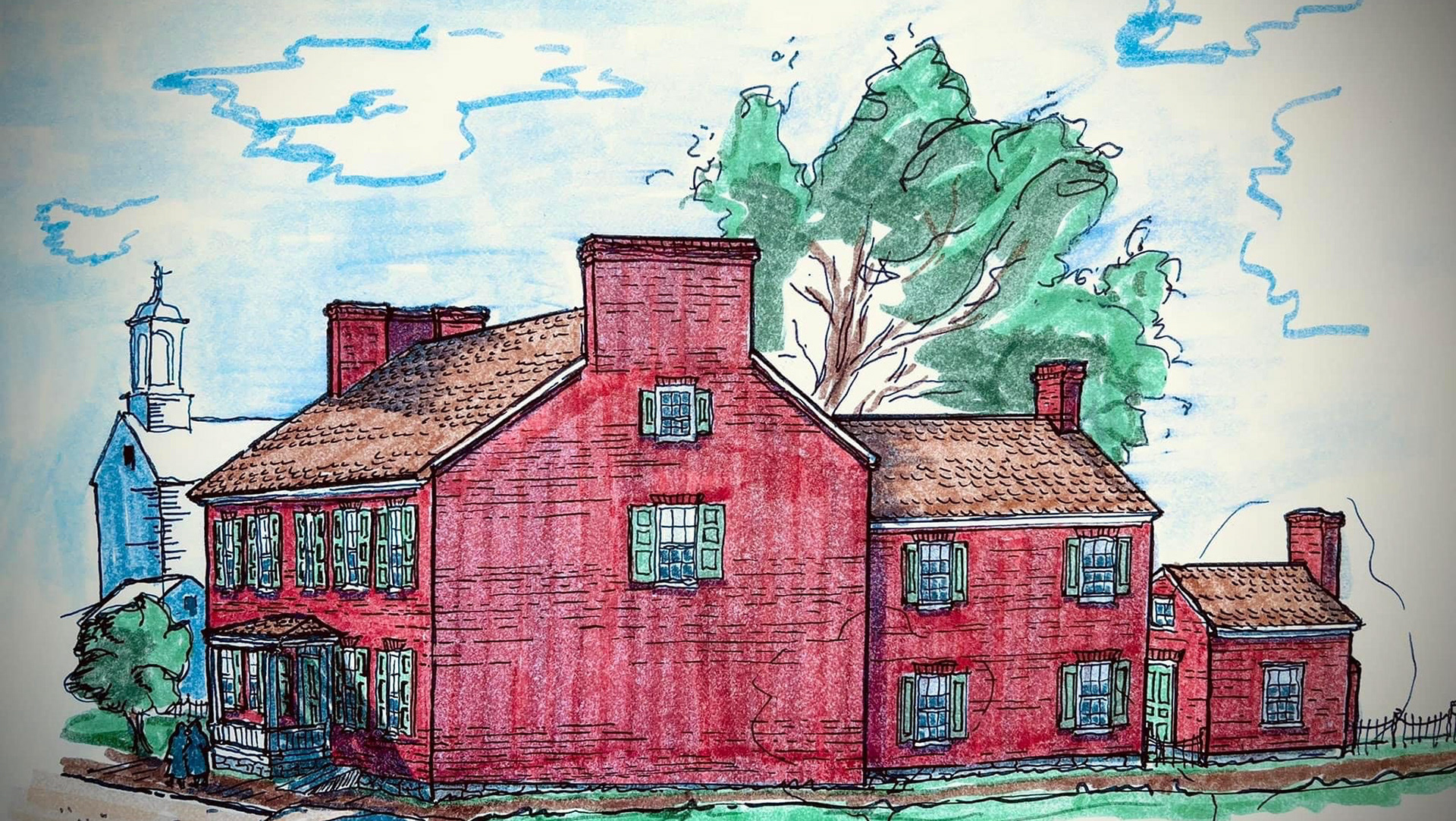January 9, 2023
Preface: This House is currently for sale, and its fate is uncertain. THIS HOUSE is why preservation committees and historic designation review boards are important. What’s left when they are all gone?
Situated on the north side of West Salisbury Street, high above the sidewalk behind an ancient stone retaining wall, one of Williamsport's more interesting-looking historic houses proudly sits. Sharp Gothic gables rise from the façade in the attic, and Folk Gothic trim surrounds the windows and doors. The original c.1860 German Siding made of cedar is still in place. The historic siding is in good condition and unique to this house in Williamsport. These important architectural elements make this house, now up for sale, a restoration and preservation dream.
The home has its original heart of pine floors, and c.1805 railings are still inside.Lot 53, on which this house sits, was first leased by Cephas and Marion Beall from Otho Holland Williams in 1790, as well as the lot to the west, lot 54. Cephas Beall (1750-1808) was of the Maryland Bealls, an ancient founding family that has inhabited this state since the 1600s. Beall was the husband of Otho's cousin Marion Ross (1766-1809), whom Otho and his brothers grew up with at Springfield Farm after his parents sadly passed away early. Cephas and Marion owned the two lots until they listed an ad for both for sale in 1799. The ad stated two lots and a house in Williamsport for purchase. The house built by the Bealls is the house on lot 54 at 27 West Salisbury, c.1795, made of log.
It is still being determined what exactly took place in 1799 when Beall put the lots up for sale, but it appears that lot 54 with the log house was sold, and lot 53, which was undeveloped, reverted to the Williams family. When Mary Williams White inherited her father's landholdings in and around Williamsport in 1841, lot 53 was one of only two she owned outright. This lot was valued at $600, the most valuable lot she inherited. The lot was substantially improved with a good house, fences, kitchen, well, etc. It's very probable that just like the house next door (now demolished for a parking lot) at 19-21 W. Salisbury, the Williams Family also built this house for their employees at about the same time. More about that house can be found in our post from August 31, 2022, and on the Williamsport Area Historical Association website in the "Architecture of Williamsport" section.
Mary and John White made an unusual deal by "handshake" with a man named Thomas Goodrich not long after the inheritance case was finalized to sell him lot 53 and the house. Thomas Goodrich made good on his word for many years before an untimely death. His lawyer, Mr. Dellinger, paid the rest of the debt, but it seems he did it under less than honorable circumstances. A legal battle ensued between Dellinger and The White's resulting in both parties being on the deed when it was sold to Issac Gruber (1819-1900) in 1860. Issac Gruber was born in 1819 on a farm along Clear Spring Road.
According to his obituary, he was born poor, possessing only "a cotton shirt, jean pantaloons tied with a red bandanna, and an indomitable spirit." Gruber however, used that drive to prosper and retired a wealthy man. Gruber married Sarah Cowton and had three children, one of whom was Judge Arthur Gruber. Gruber altered the old Williams tenant structure into the Stylish Gothic Revival house we know today.
Gruber sold the house in 1888 to the Charltons, who then sold it to the Fleming Family in 1906. John Fleming was Mayor of Williamsport from 1888-1889. The Flemings had lived in the home for more than 60 years when it was sold. In the last 40 years, the old house has begun to show its age. The home has sat unoccupied for several years and is now in desperate need of restoration. Williamsport needs to protect its historic buildings and ensure their unique landmark features are retained for future generations to learn from and enjoy.
Part of what makes Williamsport so special is our history and our charming old buildings. Buildings that are filled with tales of days gone by, telling of George Washington, Robert E. Lee, Abner Doubleday, The Civil War, Thomas Edison, and even our own Hooper Wolfe. Demolishing or irreversibly altering valuable historic buildings for parking lots or worse rips apart our historic fabric. This type of “progress” ends up detracting from the long term goal of keeping and further making Williamsport a great place to live and visit. What tourist, cyclist, hiker, couple away for the weekend or history enthusiast wants to come look at parking lots, and what citizen wants that either? Williamsport's history in brick, stone, and wood are important and should be protected. Whoever ends up owning this property, our community hopes they respect this home, its history, and its irreplaceable architectural elements.
